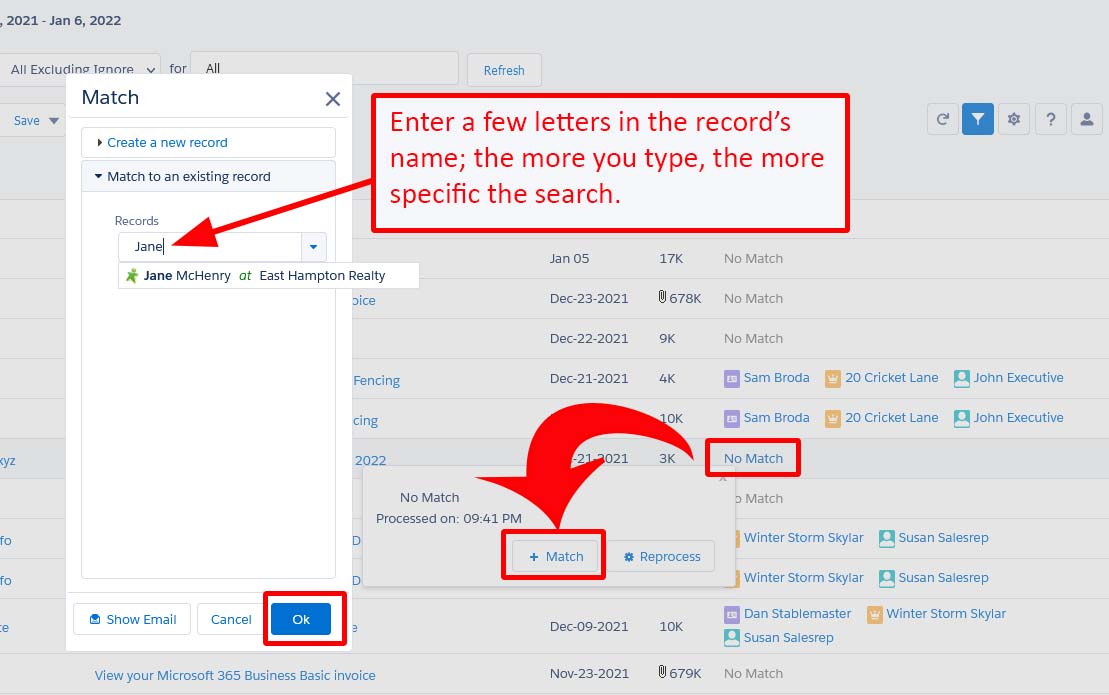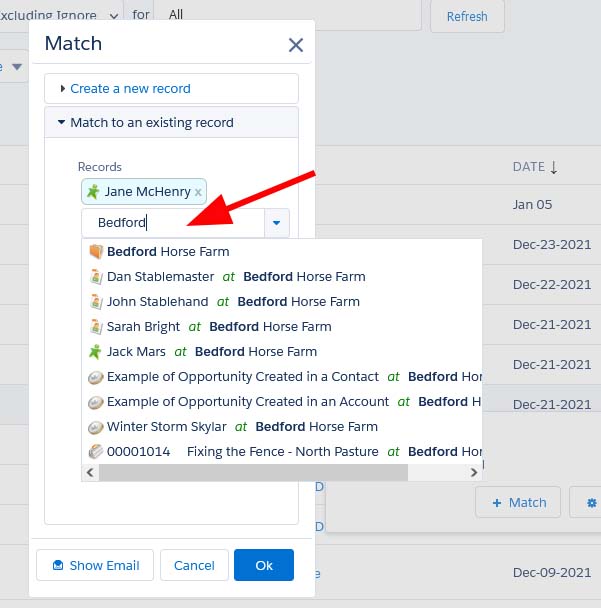Manually match Ignore status email message to Contact and Account record
helpH2
Due to ignore rules, an email message may have an Ignore status but is still desired to be logged into Salesforce. As an example, colleagues may discuss pricing for a particular project and want that as a reference connected to the Contact’s record. Another example would be internal email since there is a recommended best practice to ignore a company’s internal domain to ensure the bulk of internal email does not match into Salesforce.
Please note that with manually matching, you are not creating a rule or pattern for future emails. Manual matching is the action of matching a particular email, or emails, to the records you manually choose in this moment. It does not create memory in the system for future emails to or from this person. To achieve ongoing automatic matching, contact our support team for help with troubleshooting a lack of matching or customizing matching for you.
To manually match a message with Ignore status:
- Sign in to Match My Email
- Click the Filter button to expand the header.
- Change the View By option to Ignore and click Refresh.

- Once you locate the email to be matched, hover over the Ignore status at right.
- In the Match Details pop-up window, click +Match.
- Choose Match to an Existing record if the top if it is not already the visible option
- Begin typing a few letters of the record name. Match My Email will search your organization’s records available to the Match My Email User with that letter combination. The icons to the left of the listings indicate what type of Salesforce record it is.
- Click on the correct record for matching to select it and click OK.

- If you want to manually match this email to more than one record, you can do so. After selecting the first record, as shown in the example below, you will see another empty field. Enter a few letters of another record’s name. In this example, by entering the name of the Account, you can see we have a wide array of records to choose from. This is when the picture icons to the left might be helpful in guiding you to the correct record. In this case, the Account Bedford Horse Farm is listed first.

